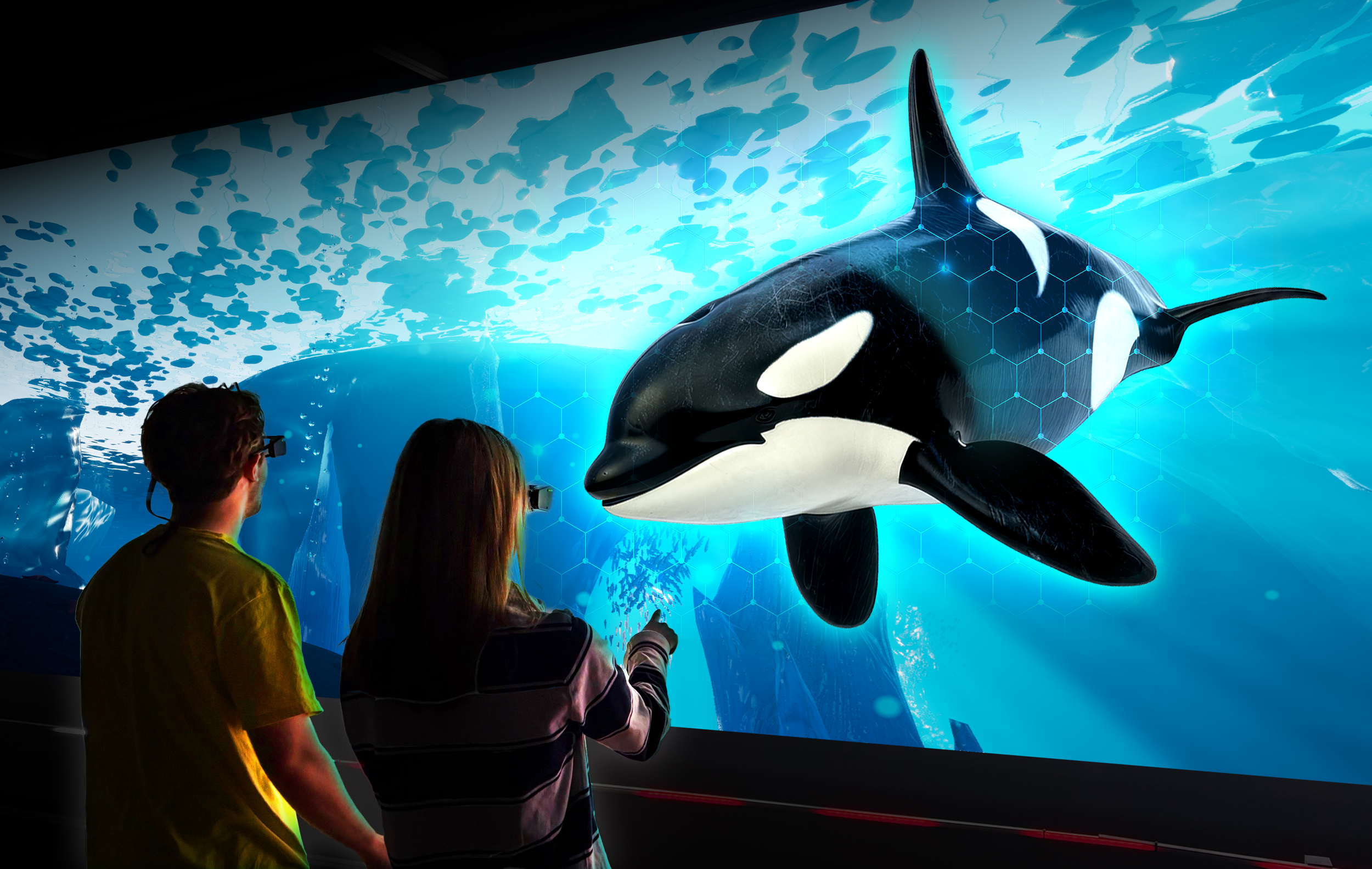How Holograms Enhance Student Learning (and Make Excursions Fun!)
Written by Kerri Pearce, Owner/Director, Hologram Zoo Melbourne
Educators have long recognised that children learn best through active, sensory-rich experiences. When students can see, hear, and engage with what they are learning about, their understanding deepens and their curiosity grows.
At Hologram Zoo Melbourne, we combine education, fun, and technology to create excursions that students remember long after they’ve returned to class. By blending holographic projections with inquiry-based teaching, we provide a safe, accessible, and curriculum-linked learning environment that adapts to every age level.
Primary: Safe Encounters with Wonder
For younger children, real-life encounters with animals can be thrilling but also overwhelming, risky, or simply impractical.
Young learners thrive when they can explore without fear. Our holograms let children:
Walk beside elephants and lions
Stand beneath a T. rex
Journey through icy Arctic landscapes
Because the animals are projections, the focus is on observation, curiosity, and wonder rather than risk.
Curriculum Links (F–6):
Science: Living things & habitats (VCSSU042, VCSSU043)
Science Inquiry: Questioning & predicting (VCSIS051)
Humanities (Geography): Places & environments (VCGGK067, VCGGK068)
“Immersive experiences increase recall and understanding.” — Parong & Mayer (2018)
Making Abstract Concepts Tangible
One of the challenges in teaching science and humanities is bridging the gap between abstract knowledge and lived experience. Projections make these concepts tangible.
A lesson about Arctic ecosystems becomes far more memorable when students are surrounded by drifting ice floes and penguins.
Research into immersive learning supports this: studies on AR/VR show that “immersion increases recall, understanding, and transfer of knowledge” (Parong & Mayer, 2018). By engaging multiple senses at once, students are more likely to retain knowledge and apply it in new contexts.
Secondary: A Gateway into STEM
Older students are less impressed by animals alone, and more curious about the technology behind the magic. That curiosity creates a natural pathway into STEM:
Science (Physics): Light, colour, and optics (VCSSU131)
Digital Technologies: Algorithms & data representation (VCDTDI046)
Design & Technologies: Innovation & systems thinking (VCDSTS044)
Mathematics: Geometry, measurement & projection (VCMMG316)
When students see STEM principles embedded in a real-world, exciting context, they are more likely to see their relevance beyond the classroom. Research has shown that linking STEM to authentic applications improves student motivation and persistence (Honey, Pearson & Schweingruber, 2014).
For VCE teachers, direct links extend to:
Physics (light & waves)
Systems Engineering (mechatronics, control systems)
Applied Computing (simulation & rendering)
We also include an optional incursion or on-site presentation exploring the History of 3D and the development of holographic technologies - giving students a real-world view of how science and creativity work together.
More Than an Excursion
We know that memorable experiences are a powerful motivator for learning. That’s why every visit is also fun:
🎥 Photo & Video Keepsakes
Students can step into our green screen photo studio, creating memories they can take home to share with family and friends.
📚 Curriculum-Aligned Choice
We can showcase any of our current content to match your studies:
Arctic (The Poles)
Asia
Africa
Australia
Dinosaurs
Space
🌍 Coming soon: South-East Asia and South America.
🎄 Seasonal Extras
Easter, Halloween, and Christmas themes are also available. While not strictly educational, they can extend the excursion and add an element of celebration.
Why It Matters
Holographic experiences:
✔ Provide safe, memorable encounters with complex ideas
✔ Make abstract concepts visible and relatable
✔ Spark inquiry and critical thinking
✔ Link directly to Victorian Curriculum outcomes
✔ Include fun, creative opportunities for students to capture memories
Final Thought
At every age, holographic experiences act as a bridge between imagination and learning.
For younger students, it’s about building curiosity and wonder.
For older ones, it’s about connecting classroom content with the science and technology that shape our future.
✨ That’s why teachers describe Hologram Zoo as “learning that sticks” — and why students leave smiling with both new knowledge and a souvenir of their day.
👋 Find us at Stand D02 — or simply check your lanyard (we’re proud sponsors this year).
We’d love to chat about how holographic excursions or incursions can support your teaching program.
References
Hamre, B. K., & Pianta, R. C. (2005). Can instructional and emotional support in the first‐grade classroom make a difference for children at risk of school failure? Child Development, 76(5), 949-967.
Honey, M., Pearson, G., & Schweingruber, H. (2014). STEM Integration in K–12 Education: Status, Prospects, and an Agenda for Research. National Academies Press.
Maslow, A. (1943). A theory of human motivation. Psychological Review, 50(4), 370–396.
Parong, J., & Mayer, R. E. (2018). Learning science in immersive virtual reality. Journal of Educational Psychology, 110(6), 785–797.

